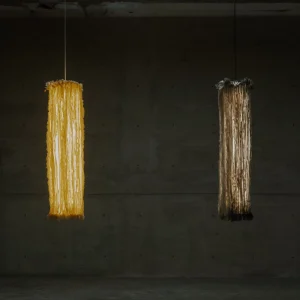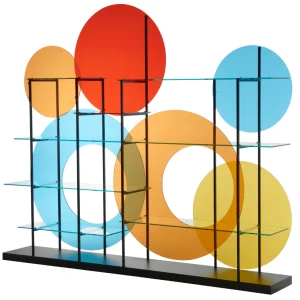
Vladimir Tatlin never got to build his full 400m-high Tower to the Third International in St Petersburg. Jeremy Dixon, on the other hand, has managed to build it twice, albeit rather smaller and in London.
A decade before he co-founded the practice Dixon Jones to regenerate the Royal Opera House, he worked on a 10.5m-high model that was mounted on the roof of the Hayward Gallery as part of its 1971 show Art in Revolution: Soviet Art and Design since 1917. The latest construction dominates the Royal Academy’s Annenburg Courtyard for the exhibition Re-creating Tatlin’s Tower, which runs until 29 January.

Tatlin’s Tower was to be a double helix spiralling on a steel frame, forming a structure inclined at the same angle as Earth’s axis, spanning the river Neva and containing rotating geometric solids for buildings of diminishing size towards the apex. There have been many attempts to model the tower but not one of them has been as meticulous as Dixon’s.
His approach starts by forensically unravelling the source material to try to extract the exact structure intended by Tatlin. The problem is, Tatlin’s original designs don’t add up. According to Dixon, the 5m-high model that Tatlin himself built in 1920 is ‘not really strictly an engineering proposition, more of a sculptural proposition’. Furthermore, ‘his model is completely different to the other source material’. Two surviving Tatlin drawings show the spiral defining the tower’s edge with gradients behaving very differently – in one they flatten out to horizontal, unlike Tatlin’s model where the gradient is essentially constant.‘It’s a very odd thing’, concludes Dixon. ‘I suppose there must have been other drawings, as there is no relation between the two sets of spirals.’

Examining straight members holding the spiral, a concealed structure-defining inner cone emerged on which, as Dixon explains, ‘all the geometry is built and indeed the thing was actually built… he made the cone members and either did or didn’t take them out afterwards. We’re not sure’. The hidden cone members are the key. ‘In our reconstruction we set out to build it that way, and then take them out’.
In 1971, Dixon built small models in balsawood to get it right, and he worked with Sven Rindl of consulting engineer Felix J Samudy & Partners, who generated detailed freehand drawings as they talked.
From 6pm to midnight for two months, with architect colleagues Christopher Cross and Christopher Woodward he built the full wooden model inside the Hayward Gallery, in two parts due to space limits.‘We had four giant speakers in the corners of the room with the latest pop music on very, very loud,’ recalls Dixon enthusiastically.

In 2011, the project started with computer modelling in Microstation by Dixon Jones’ Chris Milan. He took the elevation and extrapolated an implied geometry of elliptical shapes that go underground and, where they intersect the cone, generate the spiral. Dixon sees in it ‘a lovely sense of the Tatlin Tower expressing movement… the futurist vision.’
The computer modelling not only produced new aesthetic insights, including a stunning CGI of the tower over the icy Neva , but also a blueprint for fabricator MDM in Brixton.
They set about building the tower with steel, but as there was insufficient time to make the spiral in steel at their yard they used plywood. Re-assembled at the Royal Academy, the spiral is being replaced with steel, and the internal solid elements – a cylinder below a pyramid below another cylinder, topped with a dome – are represented by mesh-covered shapes sprayed silver. The tower stands 10.5m high on a 10m-wide base, which set the limit on scale – any wider would have obstructed deliveries. Construction was carried out with with a cherry picker.

Black and white images give no clue to Tatlin’s intended colour.At the Hayward, recalls Dixon, ‘we painted it a brighter red… like a devil’. This time, like industrial steelwork, it is being painted with corrosion-resistant red oxide paint. This is far more subdued but Dixon is confident it is what Tatlin would have done.
In timing and its strange, twisting steel frame, Dixon’s tower chimes with Kapoor and Balmond’s Orbit tower for the London Olympics. But the new Tatlin Tower is just a recreation – the real unbuilt concept, Dixon says, ‘remains pristine… never sullied by time’.






